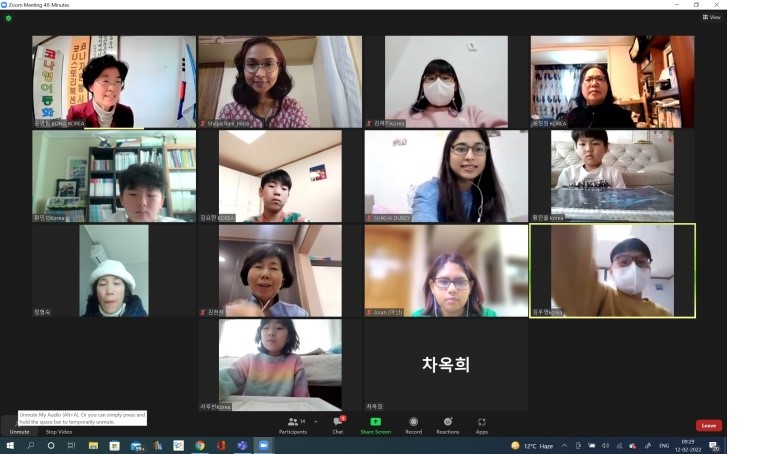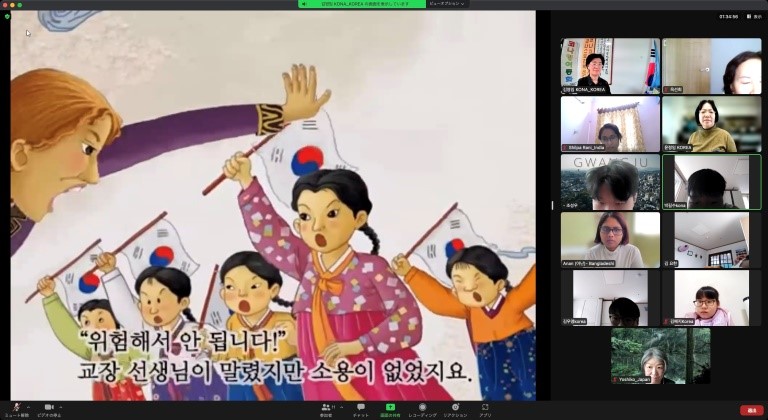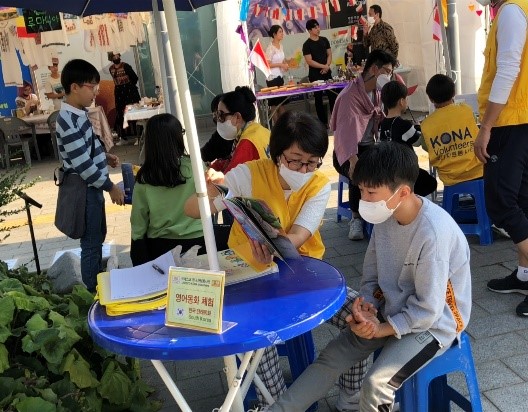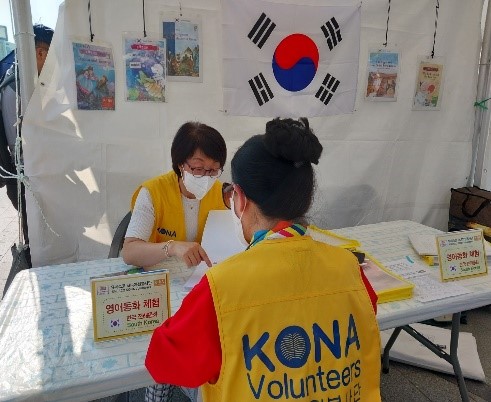“Volunteering for the Joy I Give and Receive”
My Experience Volunteering Online with UNESCO-KONA
By Shilpa Rani
I have had the privilege of being a part of UNESCO-KONA’s volunteer family since 2014, while I was a Ph.D. scholar at the Gwangju Institute of Science and Technology (GIST). The concept of learning through stories is something that had fascinated me about the KONA system. I returned back to India in mid-2018 after graduation. In 2020, when the pandemic hit and learning/teaching platforms moved online, it did not matter where in the world we were, as we could still connect. I reconnected with KONA and started my volunteering journey again.

The pandemic had brought like-minded KONA volunteers back together, this time via Zoom. Volunteers from Korea (KONA-families), India (myself), Canada (Kevan), other volunteers residing in Korea from Japan (Yoshiko), Bangladesh (Nayan), the U.S.A. (Alex), India (Shikha), children from Gwangju Children’s Home, and senior citizens in Gwangju all participate in a Zoom call from their respective homes on the day of volunteering. We split into breakout rooms and do the activities assigned for the day. Although we follow a strict curriculum, there is a lot of fun in between. The sessions begin with some physical exercise or meditation, and then we slowly begin our learning process. It is a pleasure to watch how Kim Yo-han, Kim Hae-ji, Kim Woo-young, Park Kil-su, and Lee Ha-yul from Gwangju Children’s Home are growing steadily and blossoming into more confident people.

This year I had the opportunity to support KONA volunteering through my active participation in content development with a presentation on 15 various Korean historical aspects which were to be introduced to students in Côte d’Ivoire (West Africa). Although I did not meet the African students in person, I know that my small contribution helped. During my research process, I was able to learn a lot about Korea and its culture. To list a few, they include the connections between the ganggangsullae dance performed in a circle by school children to this day and its association with the story of Admiral Yi Sun-shin, as well as the scientific basis for the Korean language formed by King Sejong. I talk to people in my country about Korea’s rich heritage and culture when I am approached with conversations around K-pop or K-dramas. Foreign volunteers also share about their culture during the Saturday sessions with children.
I have also had the opportunity to engage with senior citizens who are interested in story mapping as a method of learning. Their zeal to learn and explore surprises me. I cherish my time with them.
We must be willing to share what we individually have of value with the rest of the world. You may never know how you are impacting someone’s life.
Tell me and I forget. Teach me and I remember. Involve me and I learn.
- Benjamin Franklin
Orating a Korean Folktale During the 2022 GIC Week
By Ha Hye-soon
Hello, I am Ha Hye-soon, a teacher who likes children and likes to read books. My daughter is now a freshman in college, but she learned English through stories at the KONA Storybook Center when she was in the second grade of elementary school. Now I have taken it up as a challenge to learn English and try my best with all my heart. I have known about the Gwangju International Community Week (GIC Week) event because my daughter volunteered there in the past. But unlike then, it was more meaningful to participate in this event this year under my own name, and not as a parent.
The venue for the event was around the May 18 Democratic Plaza, where several teams participated in the GIC Week event. I made puppets for fairy tale characters and practiced a lot with my family before the event. On the day of the event, I decorated my booth with national flags and traditional fairy tale books, arranged tables, and prepared even more for the event. During the event, many citizens showed great interest, and the UNESCO-KONA booth was very crowded. I enjoyed the visits of parents and young friends who are interested in English.

I orated the traditional Korean fairy tale The Rabbit’s Liver and encouraged participation by interpreting Korean slowly or quickly depending on the target, and sometimes alternately reading one line with the visitors. In the story, a brave Turtle went out to find a rabbit living on land because it needed its liver to heal the sick Dragon King. The Rabbit who came to the palace tricked and ran away to land again. It is an interesting story to learn the wisdom of the Rabbit, and it was so fun and enjoyable for young friends to listen to it with interest and react as if they were a rabbit. After the event, my throat hurt because I was orating so excitedly. I did not realize it then, but it was a really happy time. I was so glad to read fairy tales to my friends from Gwangju Children’s Home whom I had met at the children’s English library and asked how they were doing. One of my friends told me that he wanted to go to America because he wanted to learn English and know American culture.
Volunteering seems like service to others, but the joy and gratitude that came back to me in the end were also great. It was a precious day to adorn the history of our KONA Center that everyone helps make together. Thank you to all the participants who are part of the UNESCO-KONA family. I want to continue to volunteer for the joy I give and receive.







